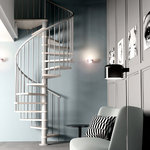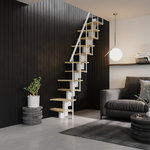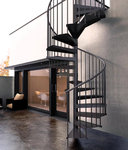Browse the range Glossary
Glossary
This glossary of 1001 Stairs related
terminology summarises the most common and basic terms used in staircase
construction and the installation of balustrades:
Baluster/Spindle - the vertical member, plain or decorative, that acts as the infill between the handrail and the tread.
Balustrade - the collective name for the complete assembly of handrails, balusters/ spindles, connectors and end-caps.
Continuous Handrail - using straight lengths of handrail connected to each other by handrail fittings, the handrail flows over the tops of balusters/spindles to create a continuous run of handrail.
Going - the going of a flight of stairs is the horizontal distance between the face of the first and last risers. The individual going of a step is measured horizontally from the front of the tread to the start of the tread above.
Nose - the part of the tread projecting over the tread below.
Parallel Wires - lines of cable joining balusters to each other, an attractive decorative addition to a railing/balustrade.
Pitch - the angle between the pitch line and the horizontal.
Pitch Line - the notional line connecting the nosings of all treads in a flight of stairs.
Railing - a collection of balusters/spindles joined together by a handrail.
Rake - the pitch of the stairs.
Rise - the rise of a flight is the vertical distance between the floors or landings (floor-to-floor) connected by the flight. The individual rise is the vertical measurement from top of tread to top of tread.
Staircase - the entire structure relating to a stair, comprising steps, treads, rises, balusters/spindles, balustrading, landings etc.
Stairway/Stairwell - the space/void provided for the stairs.
Step - the tread and rise combined.
Total Height - is measured from floor-to-floor.
Total Width - is the breadth of the tread including one railing.
Tread - the top or horizontal surface of a step.
Winders - are radiating steps narrower at one end that are used to change the direction of a staircase through 90º or 180º.












